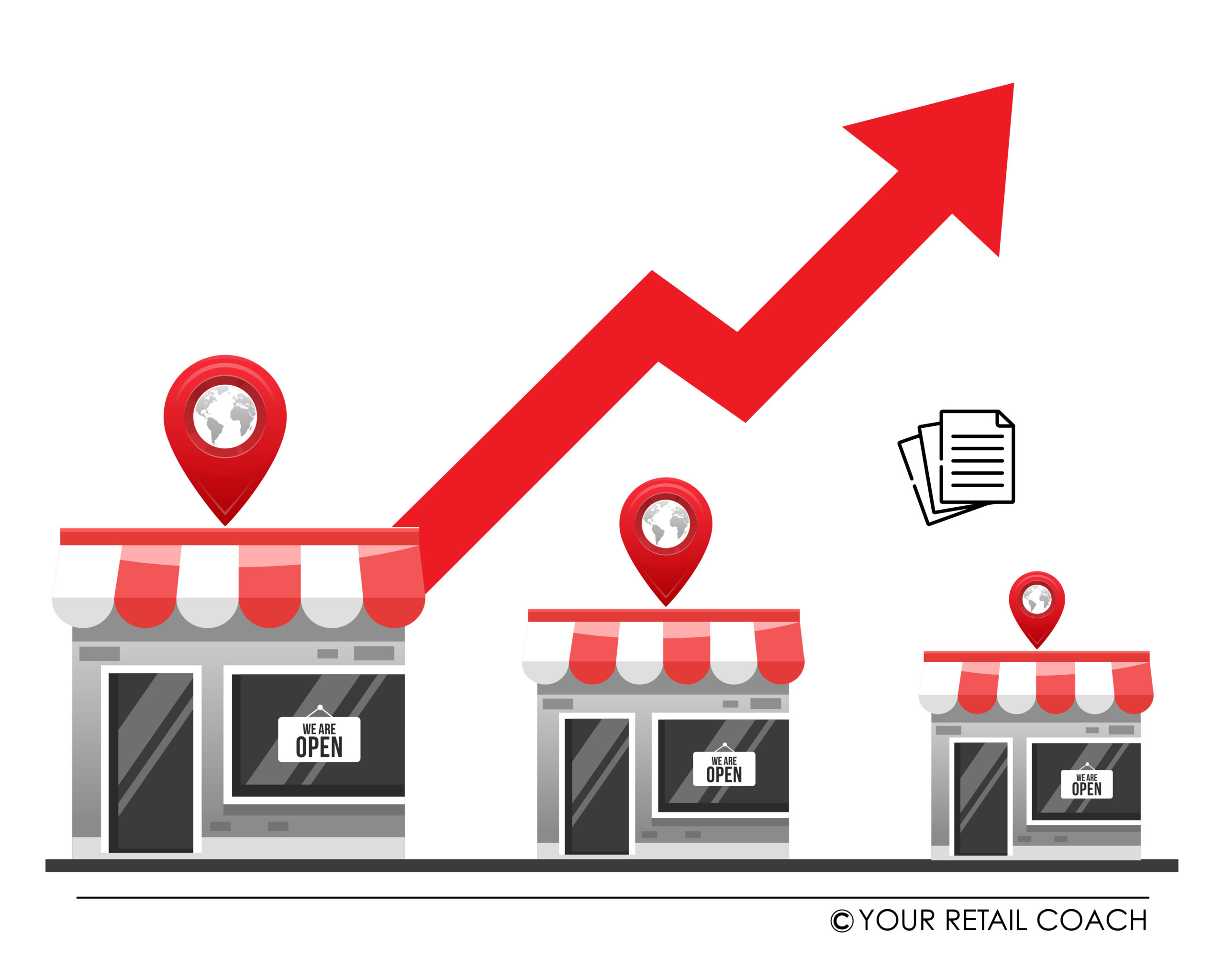Thinking of growth and expansion in retail, there is always a tendency to lean towards the marketing aspects of it. Then we begin to consider many organic and inorganic growth strategies. But that is only one aspect. Another critical aspect is operational planning. It is naïve to assume that an expanded business version is manageable when there are struggles with the existing state of operations.
As retail and eCommerce consultants, YRC has witnessed many retail enterprises seeking business growth and expansion. And none with poor operational planning ever made it to the other side. Even with one additional store, operational improvisations are necessary. And prudence says that it is better to address the operational issues before they become a dragon.
A retail store gets good at its job when it operates proficiently and in a planned and organised manner. Let us say a departmental store is capable of delivering 100 orders per day without a strictly-defined process. Now say that this process is mapped and defined using SOPs. The flow of work and operational standards get established. Employees get a defined operational roadmap. Now they can execute their duties with lesser supervision. The loopholes or deviations in the existing order fulfilment operations become more easily identifiable. This kind of planned operational certainty has a positive impact on process capabilities enabling businesses to do more out of it. The curated process itself becomes a source of light to correct other business processes like purchase, inventory, warehouse, logistics, automation, etc. It also helps in resource redirection. It gives freedom to business owners from the routine operational affairs of their stores.
Further in this blog, we shall see how retail stores can improve their store operations and use enhanced operational capabilities as a platform for business growth and expansion.
Departmentation
Departmentation is one of the important management principles that all retail businesses must implement. For retail stores, this departmentation is nothing but the functional partitioning of their main business processes or operations. It serves two key purposes – building a better organisation and specialisation. Various departments in retail stores include procurement and inventory management, warehouse management, cash and accounts, sales and merchandising, logistics and home delivery, CRM and customer support, marketing and business development, HR, finance, etc.
Is departmentation necessary for all retail stores? What about a small retail store? Organisational design and structuring are fundamental necessities applicable to all organisations including retail or eCommerce enterprises irrespective of the size and scale of the business. In the case of small retail enterprises, workflows are shorter with possibilities of overlapping. In such cases, a department may comprise even one person.
Departmentation or functional segmentation helps retail stores become organised. In the event of expansion or addition of new stores or more business volume, having a well-structured organisation makes it easier to scale operational capabilities in a planned and systematic manner.
Process Orientation
Every department in a retail store plays a certain function. For example, the purchase and inventory department ensures that stocks are always available in the required quantities. To achieve this, the orders have to be placed on time. The reorder quantity must be known or derived. Communications with the right suppliers must take place. Someone has to be assigned these duties and responsibilities. This whole series of operational activities is a process. When this process is mapped and defined using SOPs (Standard Operating Procedures), what needs to be done gets established. The employees would know the workflow. The operational and administrative requirements at every step are established with timelines. SOPs further help to secure interdepartmental coordination. The same thinking can then be applied to all the business processes of a retail store. The outcome is a network of processes to manage and execute the retail store operations. This is a stage of attained process orientation. When the need arises, these SOP-based processes could be replicated with higher conviction and confidence in new stores with localised improvisations.
Automation
We tend to get futuristic thinking about automation. But automation is not confined to robots taking over business operations and we could home. Automation in business is also taking the help of technology to aid operations. Technology could aid operations with its ability to handle more transactions, derive complicated insights from data, send notifications on mobile phones, and in a thousand other ways. Yes, self-driving warehouse vehicles are also included.
In a retail store, automation or technological solutions/features includes bar code scanners, digital payment, cashless checkout, shopping website/application, ERP-BPM software, analytics, IoT and SMART technologies, robotics, AR/VR, smartphone notifications, order tracking, etc. The technology strategy and selection of solutions for a retail store depend on its business requirements and objectives. For example, big retail supermarkets often experience heavy footfall on weekly sales days. Automated checkout is an ideal solution to address the issue. The same technology may be unfeasible for small retail stores.
As retail consultants, we always emphasise the early adoption of suitable automation and technological solutions. It drives the ability of retail stores to level up their operational superiority much required for growth and expansion.
For example, by clubbing small orders from each locality (within the delivery zone), local grocery and departmental stores can expand their customer base. This is possible by creating/customising their shopping app/site and letting customers know about the expected delivery date/time before order placement. Internally, a minimum total order volume could be set for each locality. Required insights could be generated via the use of analytics software.
Strong middle-level management
The middle-level management comprising managers or team leaders or senior executives, in the context of a retail store business, is the bridge that connects the ideas and decisions coming from the business owners or the top-level management with the operations level and the operations executives. In a small business, it could be just the store manager. For larger ones, it could be the functional heads spearheading different departments or sections. These positions are vital for the operational capabilities of a retail store. These are the positions that control the operational performance of the respective departments/functions under their aegis. These people act as a support to the business owners so that the latter would not have to meddle in the routine operational affairs of a store. With a strong support system and operations management, business owners could spare the time and space needed to focus on higher business growth and expansion goals.
Professionalism in HR activities
Common HR activities like hiring, pay, training, compliance, exit, benefits, etc. are so rudimentary that sometimes in small setups business owners carry them out with a general proficiency or understanding of the field. There are business implications of not applying the best HR practices.
Take the example of retail store owners complaining about high attrition. The question also goes back to them. What did they do to prevent people from not leaving their jobs? Was the pay competitive? Was suitable training provided? Is the work culture productive and encouraging?
An organisation cannot strive for growth and expansion in business if it does not have a stable and productive team.
FAQs
What are some of the common problems in retail store operations?
Top four challenges – Demand forecasting, maintaining inventory, inability to fulfil delivery orders, and retaining skilled staff.
What are the operations of a retail store?
Procurement and returns, quality control, inventory and warehouse management, logistics and delivery, shelf management, cash and accounts, staffing, fixed assets management, housekeeping, safety and security, waste management, CRM, etc.
How to optimize your retail store operations?
Key steps
· Departmentation
· Process Mapping
· Development of SOP-based store operations manuals
· Store Layout Planning, Warehouse Layout Planning
· Use of technology and automation solutions
· Organisation Design and Team Management
What are the 5S of retail operations?
Systems, Staff, Stock, Space, and Shoppers
About Your Retail Coach (YRC)
We are a 10-year-old retail and eCommerce consulting enterprise with rich experience in providing business solutions to 500+ clients in 25+ verticals. As a brand with a growing international footprint, we endeavour to maintain world-class standards in our service design and delivery. Our projects are handled by professional retail operations consultants.
To know more about our retail operations consulting services or to speak to one of our retail and eCommerce consultants, please drop us a message.











